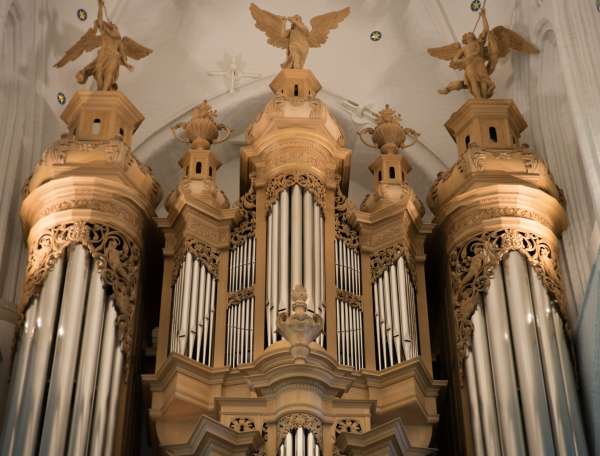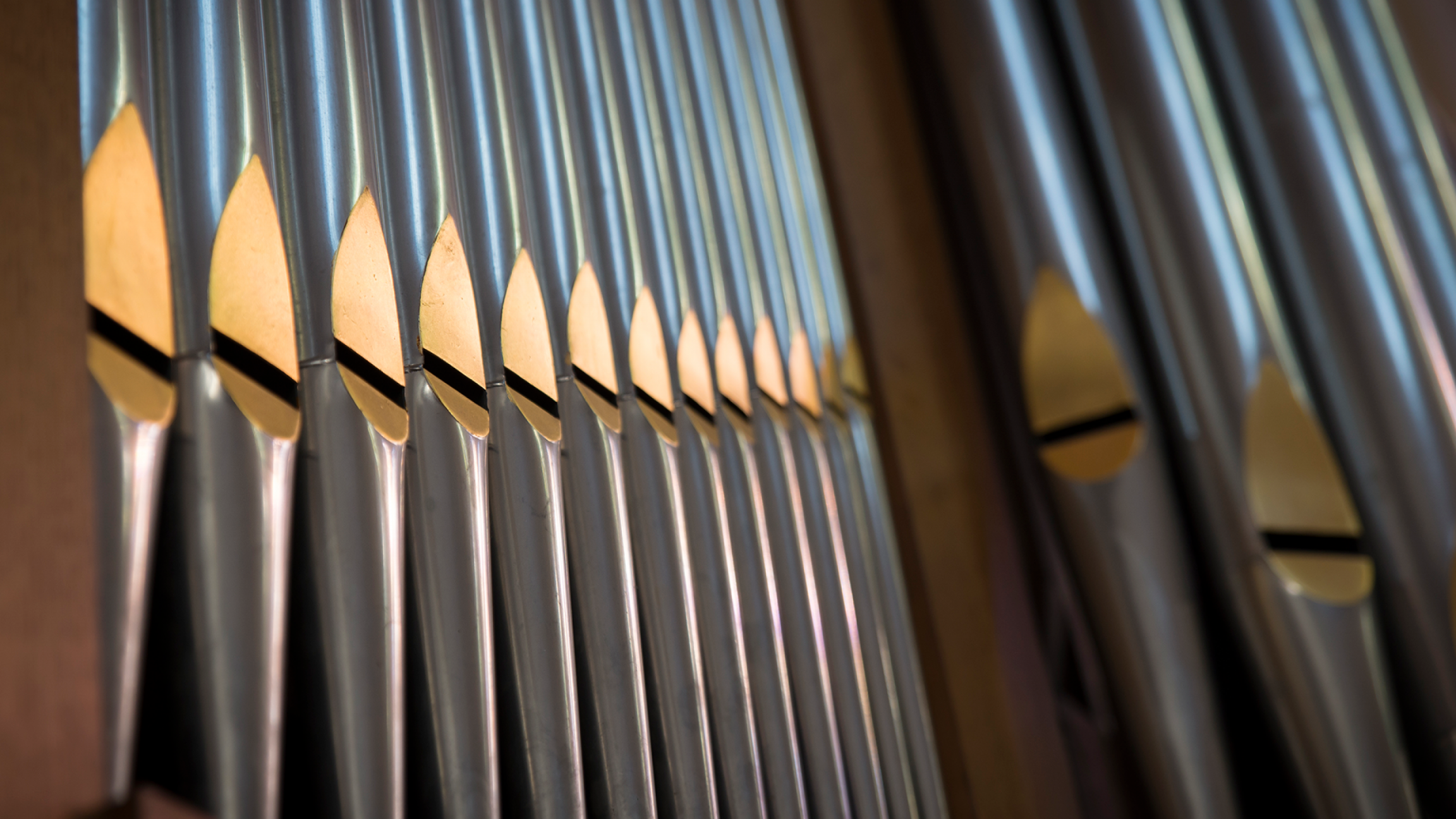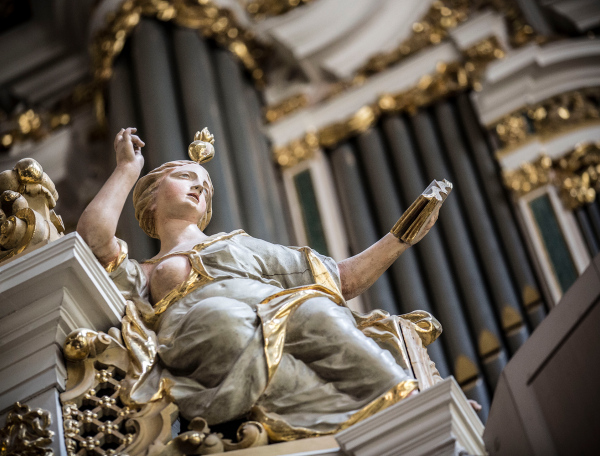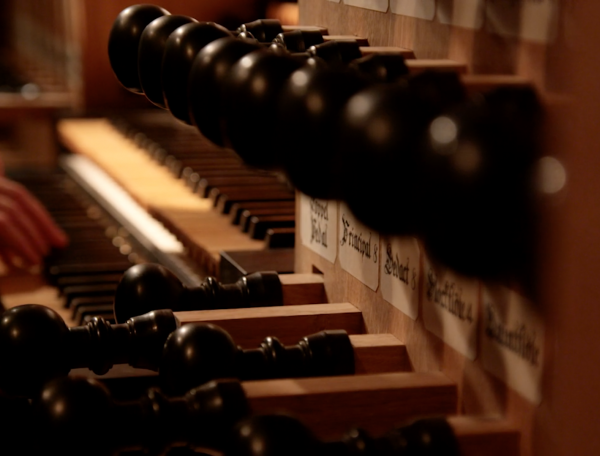

Jesus Christus, unser Heiland
Jesus Christus, unser Heiland performed by Reitze Smits
St Jacob's Church, Leeuwarden
Behind the music
Leaps and runs
The last of the six catechism chorales receives unusual treatment
Unlike Calvin and his Dutch followers, Martin Luther recognised a very clear role for music in the church. “Do not rely on the young folk to remember and learn from the sermon alone”, he notes in the preface to his Deutsche Messe (1526), in which he also proposes folk songs as a way of remembering theological concepts. In the same publication, Luther links the chorale Jesus Christus, unser Heiland to the sacrament of Communion. The melody became one of the six songs of the catechism, thus ending up in Clavier-Übung III.
The setting is simple in structure, yet full of symbolism. The unusually large leaps of the theme are seen by some people as two lines – God and mankind – who keep approaching and losing one another again, whereas others interpret them as a cross motif or even a representation of the Greek letters chi and rho, for Jesus Christ. Such symbolism on paper is difficult to hear, and it is likely that Bach simply wanted to experiment on a purely musical level with a perpetuum mobile of leaps and runs. It is only in the last bars, when the melody in the pedal is no longer heard, that the machine finally comes to a halt with one last dissonant twist.
Clavier-Übung
In Leipzig, between 1731 and 1741, Bach published four parts of Clavier-Übung, a title used previously by Johann Kuhnau, his predecessor as cantor at the Thomasschule, for similar collections of works for organ and harpsichord. The compositions are very varied in nature and, although the title suggests otherwise, were difficult to play. Bach addresses all the styles, genres and techniques for harpsichord and organ that were prevalent at the time, but then in the superior form to which only he had the patent.
Clavier-Übung I (1731) contains the six partitas, BWV 825-830; Clavier-Übung II (1735) the Concerto nach italienischen Gusto, BWV 971 and the Ouverture nach französischer Art, BWV 831; and Clavier-Übung IV (1741) the Goldberg Variations, BWV 988. The largest part, Clavier-Übung III (1739), is the only one devoted to organ, containing mostly chorale arrangements, or organ preludes based on Lutheran hymns. Bach made two versions of each chorale: one for great organ and one for a smaller type of organ. Most of the chorales refer to the six parts of the catechism. It is unclear whether Bach also played them during the services, or whether he developed his musical ideas in them for his own use, with no intention of performing them in public.
- BWV
- 688
- Title
- Jesus Christus, unser Heiland
- Instrument
- organ
- Genre
- organ works
- Serie
- Clavier-Übung III
- Year
- 1739
- City
- Leipzig
Extra videos
Vocal texts
Original
Translation
Credits
-
- Release date
- 24 April 2015
-
- Recording date
- 16 September 2014
-
- Location
- St Jacob's Church, Leeuwarden
-
- Organist
- Reitze Smits
-
- Organ registration
- Mayuko Banno
-
- Organ
- Christian Müller, 1727
-
- Producer
- Frank van der Weij
-
- Film director
- Jan Van den Bossche
-
- Directors of photography
- Diderik Evers, Ruben van den Broeke
-
- Music production, editing and mix
- Holger Schlegel
-
- Film editor
- Dylan Glyn Jones
-
- Colorist
- Jef Grosfeld
-
- Production assistant
- Hanna Schreuders
-
- Interview
- Onno van Ameijde
-
- Acknowledgements
- Rob Tigchelaar
Discover
Help us to complete All of Bach
There are still many recordings to be made before the whole of Bach’s oeuvre is online. And we can’t complete the task without the financial support of our patrons. Please help us to complete the musical heritage of Bach, by supporting us with a donation!

